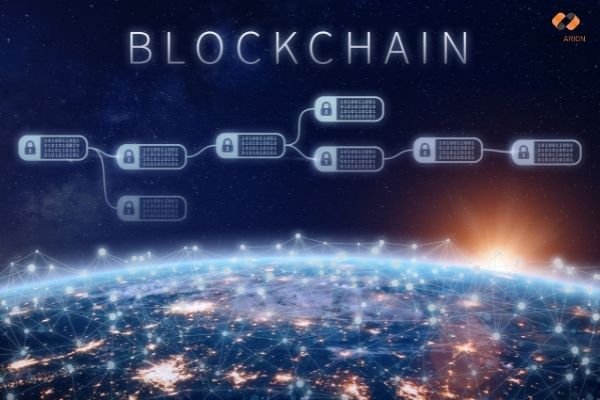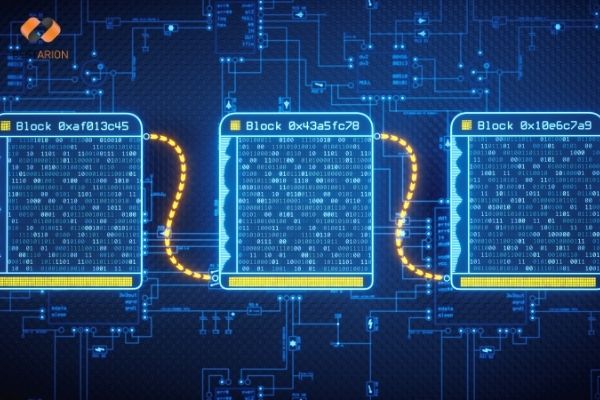What Is a ‘Layer 2 Blockchain,’ and What Does It Mean?

Blockchain has grown in prominence since Satoshi Nakamoto released the Bitcoin whitepaper in 2008.

Because of its decentralized and secure nature, people have used blockchain technology in fields other than payments.
The “blockchain trilemma” includes scalability, according to Ethereum founder Vitalik Buterin.
According to Buterin’s theory, no blockchain network can achieve decentralization, security, and scalability in the same way. To reach near-optimal functionality, they must compromise some elements.
Scalability is traded for security, and decentralization is traded for scalability in Bitcoin and Ethereum. This explains why a large blockchain network, such as Bitcoin, can handle roughly 7 transactions per second. Visa’s payment system, for example, can process up to 24,000 transactions per second.
If blockchain technology is to gain further traction, it must address the issue of scalability. In recent years, several solutions have emerged, notably the now-popular “layer 2” protocols.
I explain what layer 2 blockchain is, how it works, and why it’s vital for blockchain adoption in this in-depth look.
Let’s get started!
Layer 2 Blockchain Explained
A supplementary protocol called Layer 2 is meant to run on top of another blockchain network. Layer 2 is so titled because it’s intended to work independently from Layer 1, the blockchain’s basic layer.
So, why is layer 2 blockchain such a big deal?

Layer 2 protocols serve as an auxiliary framework for processing transactions, reducing the stress on the base layer. This improves the system’s ability to manage more users while also increasing the transaction speed of a blockchain network (throughput).
Have you ever wondered why transactions on the blockchain take so long? The structure of the blockchain has the answer. Unlike centralized systems like PayPal or Visa, blockchain transactions must go through many phases before being approved: acceptance, mining, distribution, and validation.
Layer 1—the blockchain’s fundamental layer—must currently manage all of the tasks needed invalidating each transaction. Processing speed will inevitably decrease, hurting scalability and user experience.
Layer 2 is intended to run on top of the existing base layer, relieving the main chain of certain duties. The base layer may only be responsible for specific responsibilities such as security and control in this situation.
It’s worth noting that layer 2 blockchains are still required to report to the base layer. This ensures that transactions are properly validated while maintaining the blockchain network’s security.
What are Examples of Layer 2 Blockchain Solutions?
In a blockchain, layer 2 protocols operate independently of the main chain. That’s how they came up with the term “off-chain.” The following is an example of what I mean. I’ll go over the various layer 2 blockchain solutions that are now in use in the following paragraphs:
Blockchains that are nested
A layered blockchain is one that runs on top of another. In this situation, the main chain and the secondary blockchain chains have a parent-child relationship. Auxiliary chains perform transactions while the main chain distributes tasks and controls overall parameters.
A firm hierarchy is a useful illustration here.
Instead of assigning a massive task to one individual, the management divides the work across the team. The job must then be returned to the manager for approval.
Nested blockchains work in the same way: multiple chains get tasks from the main chain and report back to it when they’re finished. Ethereum’s OMG Plasma Network is an example of a stacked blockchain.
Channels of State
State channels allow participants on a blockchain network to communicate directly with one another.
Users can execute transactions outside of the main chain, eliminating the requirement for a third party. This translates to less time spent waiting for miners and faster transaction processing.
Layer-1 nodes aren’t required to validate transactions in state channels. Instead, a smart contract technique is used to lock down the resource. When a transaction is completed, the base layer records the channel’s final state.
It’s also worth noting that state channels keep transaction details secret between parties. The final transaction, on the other hand, is recorded in the public ledger.
Bitcoin’s Lightning Network and Ethereum’s Raiden Network are two examples of state channels.
The Lightning Network enables users to complete several microtransactions in a short amount of time. In the meanwhile, Ethereum’s Raiden Network allows blockchain participants to run smart contracts through their channels.
Sidechains
A sidechain is a sub-chain that is connected to the main chain via a “channel” or “bridge.” The sidechains are the trees in the forest that is the main chain.
Sidechains were created to handle massive batches of transactions. A sidechain has its own consensus system, which relieves the main chain of some of the transaction validation work. The primary is in charge of overall security, conflict resolution, and record-keeping in this setup.

State Channels vs. Sidechains
Because of the following factors, sidechains differ from state channels:
They keep track of all transactions in a public ledger. A sidechain attack has no effect on the main chain or other sidechains. The development of sidechains necessitates greater work.
The Liquid Network of Bitcoin is a great example of a sidechain.
Rollups
Layer 2 protocols that conduct computations outside of the main chain are known as rollups. Rollups, on the other hand, will send a record of transactions to the main chain at regular intervals for recordkeeping purposes.
Rollups run data transactions without relying on the base layer, resulting in higher throughput and lower gas costs. The security of rollups is ensured by posting transaction data on the main layer.
Rollups with a Positive Attitude
Optimistic rollups get their name from the fact that they assume all transactions are legitimate by default. Optimistic rollups, on the other hand, normally require a seven-day delay to validate a transaction—enough time for dispute resolution if a problem arises.
Rollups of Zero-Knowledge
Before submitting proof of validity to the main chain, zero-knowledge rollups undertake computations off-chain.
On the base layer, a zero-knowledge rollup might store funds in a smart contract. The money is released after the proof is submitted, the transaction is confirmed, and the monies are released.
What Is the Importance of Layer 2 Blockchain?
Layer 2 solutions address the main difficulties that prevent developers from expanding blockchain-based apps. Layer 2 protocols provide four advantages to the blockchain ecosystem:
Improved Safety
To boost scale, layer 1 blockchain solutions update the base layer protocol. This could include increasing block capacity or speeding up the validation of new blocks.
Tampering with the blockchain’s basic architecture, while a good solution, may jeopardize network security.
The base layer of a layer 2 blockchain remains unchanged, with no changes to the underlying protocol. Layer 2 solutions, on the other hand, build on and complement the active base layer.
Faster Transaction Processing
Transactions can be performed off-chain with layer 2 protocols, decreasing the burden and enhancing speed and scalability. The main chain can focus on security and decentralization now that it is free of tedious activities. Layer 2 can, on the other hand, be optimized for faster computations and higher throughput.

Improved Scalability
The most compelling reason to use layer 2 blockchain is its scalability. These off-chain solutions boost blockchain networks’ transaction-per-second pace, sometimes known as “throughput.”
This is fantastic news for scalability because it assures that each user receives a rich experience regardless of network traffic. Layer 2 solutions, according to experts, will allow blockchain networks to handle hundreds, if not thousands, of transactions per second.
Transaction Fees are Reduced
To validate transactions, blockchain relies on middlemen or miners. Miners typically solve cryptographic algorithms to validate transactions, which demands a lot of processing power.
However, as more people join the blockchain network, the number of transactions will rise, clogging the system. Due to their limited computer capacity, miners frequently choose transactions with higher fees. Transaction fees, sometimes known as “gas fees,” have risen dramatically as a result of this.
Layer 2 blockchain has the potential to reduce the amount of computer power needed to process transactions. Miners will be able to handle more transactions while customers will pay cheaper fees, resulting in a win-win situation for all.
Final Thoughts
Currently, the layer 2 solution offers the best possibility for blockchain to displace old centralized systems. Blockchain technology may achieve rapid acceptance due to higher processing capacity, fewer transaction fees, and a richer user experience.
Layer 2 protocols, moreover, will hasten the integration of blockchain into global trade. We’d be able to create blockchain networks that could be utilized in a variety of businesses and that could scale to welcome more users.
This article was previously published here.
Get in touch
Phone: +842837155742
Email: [email protected]
